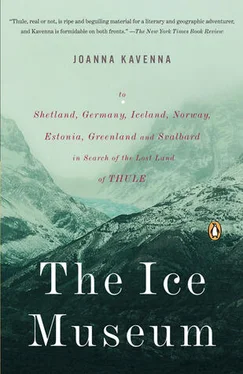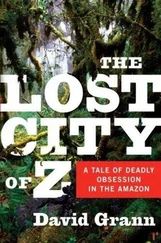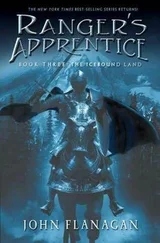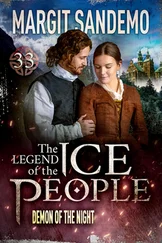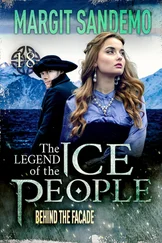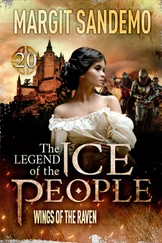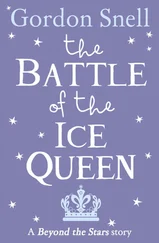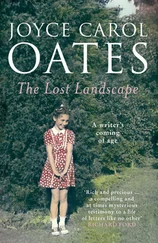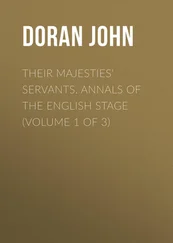The Victorians gathered coats and hampers, and arrived in the capital, Reykjavík, buying up horses, trotting out to the sites—the Great Geysir, Thingvellir, or the lava plains in the north. They stood in the rain, reciting the Sagas, as William Morris did; they came in genteel tour groups, like Anthony Trollope and his party, spilling slippers and smoking jackets onto the lava fields, in a procession of nearly a hundred horses. Through repetition in their diaries, the arrival became a ritual, a moment of recited stanzas and set phrases. The boat would dock, after a lurching voyage of some weeks, the passengers sick at heart, longing for the shore. They saw mountains standing out sullen and forbidding against a grey sky. They admired the scorched lava fields stretching away. In the summer the nights were dark blue, and the sky was always tinted with daylight colours. The interior stretched away, an inhospitable waste at the time, almost entirely unknown.
The banner still hangs, LAND OF FIRE AND ICE, across the rain-doused country. Iceland touts its wares. The tourists come for the natural pyrotechnics, as the Victorians did. Everyone is dragged to Iceland on a tractor beam of hyperbole, lured by stories from the constantly mutating island. The tourist brochures breathe visions of the earth’s crust, spewed liberally across the land. A land like a disaster film, a natural gore-flick—the country scattered with the innards of the earth. Keflavík Airport, outside Reykjavík, was overrun with tourists jostling towards the luggage carousel. Tourists decked in climbing gear, preparing to hike through the lava plains, across the spacescapes, across the brilliant orange pastel sands of the sulphur bays. They stood, watching backpacks turning circles, everything stamped with a sticker: the Volcano Experience Inc., Arctic Tours, TM.
I had been travelling for a day, from Aberdeen to London, and then from London to Iceland. But it still seemed indecently fast, when I thought of the Victorians in their cramped steamships, bitterly seasick, finding the arrival in Iceland an enormous relief. I had landed into a rainstorm, but I was wrapped in waterproofs, sitting in a bus to Reykjavík. The rain slapped against the windows. The tourists were slightly sodden; we were all sitting wetly on our bags, rustling in waterproof layers. As the bus moved across the lava plains, the country was grey. The sea was blanched and tepid. The dry grass stretched to the sea; there were flatlands where horses grazed. Low shrubs took the place of trees. A white stone church stood on a hill. The road ran past the serried stacks of flat-topped mountains, rising from the shrublands and the rock plains.
A plain of cracked earth stretched away, littered with black ash rocks, coated with thick moss. The ground was always uneven; it looked like an immense sculpture, representing sultry waves. A crazed piece of national art, it was motion petrified, retaining something of the dynamism of rocks that have succumbed to the force of the lava burning beneath them. Above the spikes of the lava plain, the mountains rose and the grey clouds moved slowly above. There were mountains shaped like explosions, extruding sharp points. There were long-backed ridges, draped in cloud vapour, and clear cones, their sides neatly chiselled.
The land was rain-drenched; the afternoon was cloaked in mist. On the bus I stared through the smeared windows at the lava fields. The city of Reykjavík stretched languidly along the coast, dwindling into low-rise concrete at the edges, crowded in the centre around a small lake. The suburbs were full of American-style diners, mall-strips interspersed with trees. The sea was cold white, hammered flat by a grey sky. The centre of the city was made of corrugated iron, its small houses pressed closely together. The streets were teeming with drenched travellers, shuddering at bus stops in their wax jackets and woollen hats, or staring damply into lighted shop windows. Stepping off the bus, I walked through Reykjavík into the Parliament Square, where there was a Café Paris, an art nouveau hotel and a green-stained statue. The light shook across the city; the pink tips of the mountains were silhouetted against the cold sky. Hallgríms Church was brightly lit, its main tower decked with flashy lighting, looking like a pushy cousin of the Chrysler Building in New York. There was a revolving restaurant, balanced on a great stack of towers, like a stylized sculpture of a mushroom. I reached the Town Hall, built in glowering space station style, its black form reflected on the waters of the Pond, a lake in the centre of the town.
I walked through the evening. The wind swept across the waters of the lake, distorting the reflection of the buildings. Arctic skuas shrieked across the water. There were signs to Viking sites, to the Saga Museum, to the National Gallery, to the Volcano Show: ‘You will be amazed as the earth explodes before your eyes.’ As the whine of planes above the city died into the damp evening I followed the sign to the Volcano Show. The Volcano Show was offering a glimpse of the natural weirdness of Iceland. It was like a circus sideshow, the sort of grotesque turn the Victorians might have enjoyed. ‘Fire and Ice!’ said the sign. ‘You will not believe your eyes!’ In a small building there was a projector and a wizened man with wild greying hair and a gaze of intense frustration. He saw me, fixed me with a disconsolate stare, and said slowly: ‘The Volcano Show has followed the same timetable for seventeen million years, and it will follow the same timetable for the next seventeen million years.’
‘So are you the person who films the volcanoes?’ I asked.
‘No no,’ he shook his flimsy beard. ‘That man is older than God.’
‘And how long has the cinema been running?’ I asked.
‘The cinema is also older than God. Step back please.’
And another person stepped up to buy a ticket.
‘The Volcano Show,’ he said to her, ‘has followed the same timetable for seventeen million years, and it will follow the same timetable for the next seventeen million years.’ And she smiled and paid, moved along, preparing the stage for the next recipient of the same gag, repeated to fade, to the end of time, or until Iceland consumed itself in a vibrant explosion of fire.
The cinema was a small dirty room, with bits of dismembered projector scattered across the floor. Dozens of tourists had been shoe-horned in here by the Volcano Man, who was shuffling in and out, muttering about technical hitches. The show was an hour late, but he seemed not to care; he knew he was doomed to another evening of cracking the same old jokes, and he couldn’t quite get up the impetus to start. There was an entire busload of English school-children, inexplicably dropped here, a crowd of Italians, a few Germans, and a quiet Dutch couple at the front. ‘Dutch people!’ said the Volcano Man. ‘You have a wonderful country. A wonderful country. I once knew someone from Holland—’ And then he stopped mid-sentence, gripped by a crashing sense of futility.
With an enormous effort of will, struggling against overpowering lassitude, he cleared his throat and stumbled to the front of the small hall, anorak slung over his shoulders, trousers brutally tapered, ending short of his ankles. Eyeing the audience with something almost like hatred, he tried to smile.
‘Here in the Volcano Show,’ he began, making a grandiose circle with his fingers, ‘we patiently await the next disaster . . . We began showing films here twenty-eight years ago. The last time we had a big explosion here in Iceland was during the three o’clock show, on 17 June 2000. At 3:45 P.M. there was a 6.5 Richter scale earthquake in Hekla, the biggest for eighty years. It was so very violent we felt it in Reykjavík, the seats started going up and down, nobody ran out, people thought it was part of the show.’
Читать дальше
